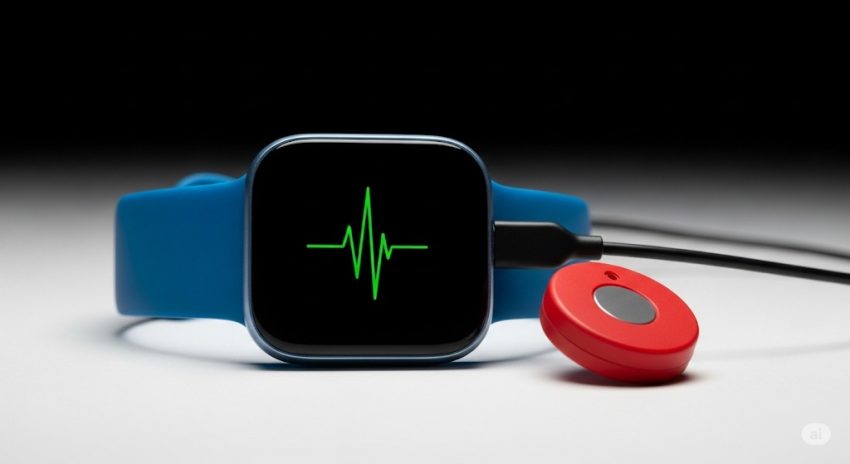The remote patient monitoring (RPM) market is experiencing transformative growth as healthcare systems worldwide embrace technology-driven patient care. “Global remote patient monitoring market valued at $24.39B in 2023, reached $27.72B in 2024, and is projected to grow at a robust 12.7% CAGR, hitting $56.94B by 2030.” This rapid expansion is fueled by technological innovation, patient demand for home-based care, and the urgent need to optimize healthcare resources. As the industry evolves, several key trends are redefining how providers, patients, and payers approach RPM.
Download PDF Brochure:
https://www.marketsandmarkets.com/pdfdownloadNew.asp?id=77155492&utm_source=reportsnreports.com&utm_medium=referral&utm_campaign=kk24
1. AI-Driven Predictive Analytics for Proactive Care
Artificial Intelligence is emerging as a cornerstone in RPM solutions, enabling predictive healthcare interventions. By analyzing continuous streams of patient data from wearables and IoT devices, AI algorithms can identify subtle changes in vitals before they escalate into critical conditions. This predictive capability empowers providers to intervene early, reducing hospitalizations and improving patient outcomes. For example, AI can flag irregular heart rhythms in real time, triggering alerts for clinicians to review and act immediately. Beyond acute care, predictive models are also enhancing chronic disease management, such as diabetes and hypertension, by customizing medication schedules and lifestyle recommendations. Healthcare organizations are investing heavily in AI-based platforms due to their proven ROI—lowering readmission rates and optimizing staffing efficiency. Additionally, as machine learning models are trained on larger datasets, their accuracy continues to improve, paving the way for truly personalized healthcare. With the global push toward value-based care, predictive analytics is not just an innovation—it’s becoming a competitive necessity for providers and technology vendors in the RPM market.
2. Integration of RPM with Telehealth Ecosystems
The post-pandemic healthcare landscape has seen RPM and telehealth evolve from standalone tools into fully integrated care ecosystems. Instead of fragmented patient interactions, platforms now combine real-time monitoring with video consultations, electronic health records (EHR), and secure messaging. This integration provides clinicians with a holistic view of patient health, enabling data-driven decision-making. For instance, a patient’s blood pressure readings from an RPM device can be reviewed during a telehealth visit, allowing for immediate medication adjustments without requiring an in-person appointment. Furthermore, healthcare providers are implementing interoperability standards like HL7 FHIR to ensure smooth data exchange between RPM devices and hospital systems. Insurance companies are also recognizing the value of integrated RPM-telehealth solutions, leading to expanded reimbursement policies. This seamless integration reduces administrative burdens, improves patient compliance, and creates a more continuous care experience. In the coming years, we can expect “one-stop” digital health platforms where RPM data flows effortlessly into the patient’s overall care plan, making hybrid care the new standard in modern healthcare delivery.
3. Expansion of Wearable and IoT Device Capabilities
Wearable technology is advancing rapidly, and its role in RPM has expanded far beyond simple step counters. Modern devices now measure a wide range of health metrics—heart rate variability, blood oxygen saturation, sleep quality, respiratory rate, and even early signs of infection through skin temperature sensors. These wearables connect with cloud-based platforms, enabling providers to track patient health remotely and intervene when necessary. IoT devices like connected glucose monitors, smart inhalers, and digital stethoscopes are being deployed at scale for chronic disease management. The miniaturization of sensors, combined with advances in battery life, has made continuous monitoring more practical and less intrusive for patients. Moreover, 5G connectivity is enhancing data transmission speeds, enabling real-time alerts and richer data analytics. The consumerization of healthcare is also driving adoption—patients are more willing to wear aesthetically pleasing, comfortable devices that double as fashion accessories. As these devices become more accurate, affordable, and interconnected, they will play an even bigger role in shifting healthcare from reactive treatment to proactive prevention.
4. Growing Focus on Chronic Disease Management
Chronic diseases such as diabetes, heart disease, and COPD account for a significant share of global healthcare costs, and RPM is proving to be a cost-effective way to manage them. Continuous monitoring allows for early detection of deterioration, reducing emergency room visits and hospital admissions. For diabetic patients, for example, RPM-enabled glucose monitors provide real-time insights, helping them adjust diet and insulin doses effectively. Cardiac patients benefit from wearable ECG devices that can transmit arrhythmia alerts to their care teams instantly. Governments and insurers are increasingly supporting RPM adoption for chronic conditions due to its potential to improve outcomes and reduce long-term costs. Remote coaching and patient engagement tools—often integrated into RPM platforms—encourage adherence to treatment plans. Additionally, multi-parameter monitoring for patients with multiple chronic conditions is becoming more common, offering a comprehensive view of their health status. As the global population ages, the need for continuous, at-home chronic disease management will accelerate RPM’s penetration into mainstream healthcare.
5. Regulatory Support and Reimbursement Expansion
Government policies and reimbursement frameworks are evolving to accelerate RPM adoption. In the United States, the Centers for Medicare & Medicaid Services (CMS) have expanded CPT codes for RPM, allowing providers to bill for device setup, patient education, and monthly monitoring services. Similar policy shifts are happening in Europe and parts of Asia, where healthcare authorities are recognizing RPM as a critical component of modern care delivery. This regulatory support not only legitimizes the technology but also incentivizes providers to implement it at scale. Moreover, the push for data privacy and security regulations, such as GDPR and HIPAA, is shaping how RPM vendors design their systems to ensure compliance. Reimbursement expansion is also fueling innovation, as startups and established players compete to offer more comprehensive solutions that meet payer requirements. The result is a rapidly maturing market where both technology and business models are evolving in sync, making RPM a sustainable and scalable part of global healthcare infrastructure.

